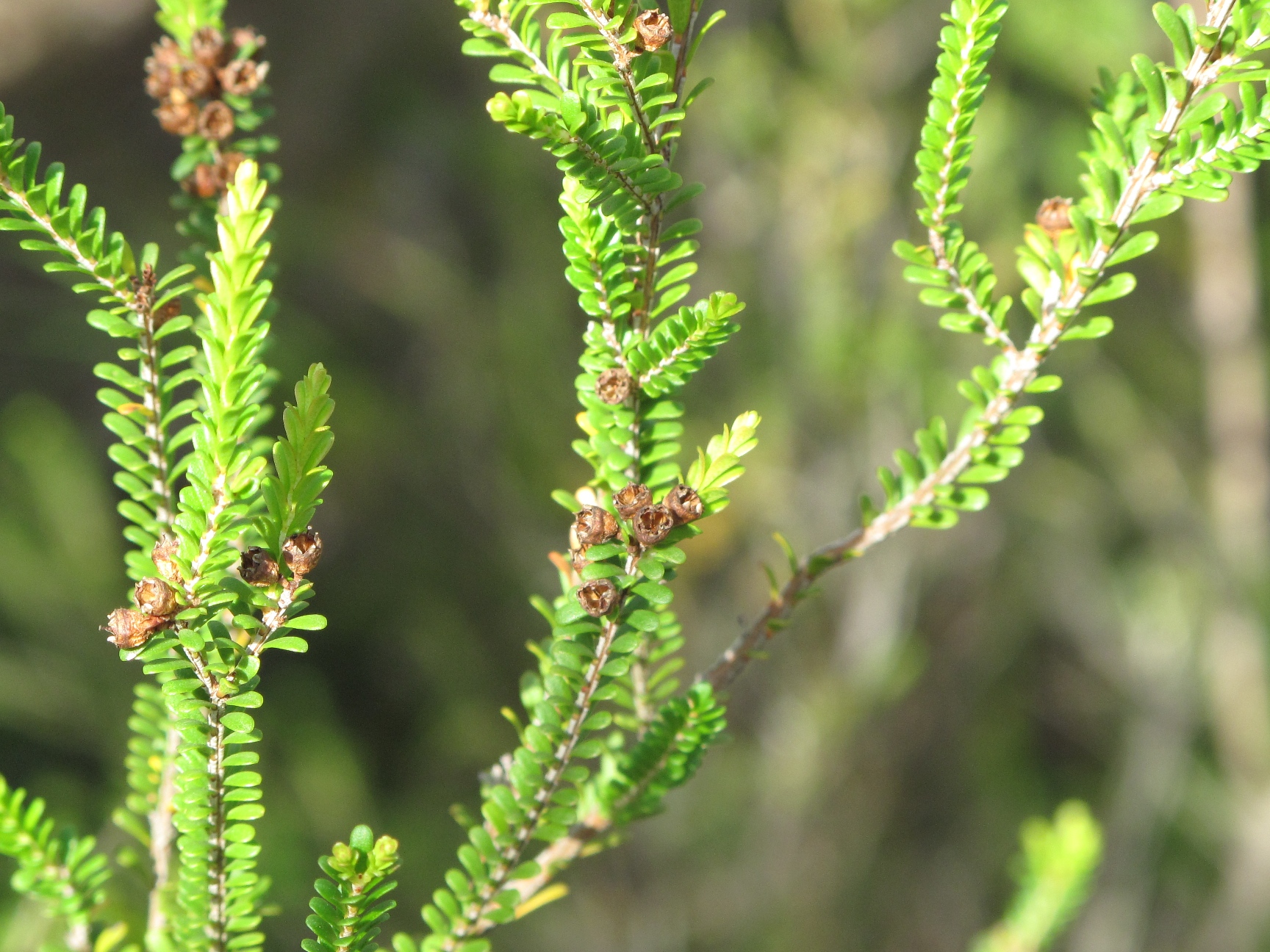Triplarina nowraensis
(Triplarina nowraensis)

Description
The genus Triplarina was reinstated from the closely related Baeckea by Bean in 1995.The seven species of Triplarina are endemic to Australia,with most found within 80 km of the coast (Bean 1995).In the Nowra district there are a number of Baeckea sens.lat.that grow in association with the Nowra Heath-myrtle: B.ramosissima,B.virgata,B.imbricata,B.diosmifolia,B.brevifolia and B.linifolia.These species can be easily distinguished from Triplarina nowraensis on the basis of leaf size and shape.The Nowra Heath-myrtle is a small erect shrub which can attain a maximum height of 5 m in areas which remain fire free for long periods.Bark grey and scaly on the branchlets.Leaves are wider towards the tips of the leaves,3.4-5.0 mm long and 1.2-1.7 mm wide.There are two parallel rows of large oil glands on either side of the midrib.The cross shaped arrangement of the leaves when viewed end on gives the shrub a distinctive appearance.The leaves are highly aromatic,with a scent like camphor when crushed.Flowers are borne in pairs in the leaf axils and are about 4.5 mm across.The creamy white flowers are produced in the spring.Fruits are hemispherical,wrinkled (2.0-2.9 x 2.1-2.8 mm) and the seeds are brown (0.6-0.8 long).The Nowra Heath-myrtle is closely related to Triplarina imbricata,which occurs in north-eastern New South Wales.
Taxonomic tree:







